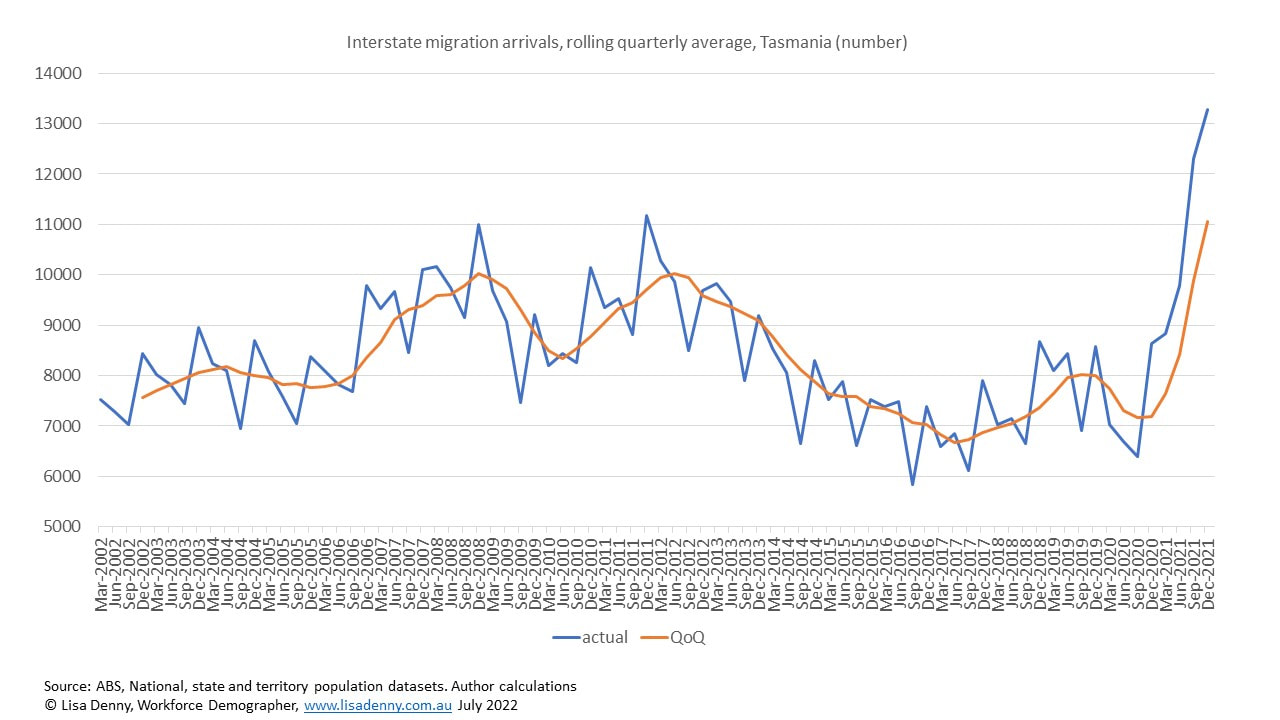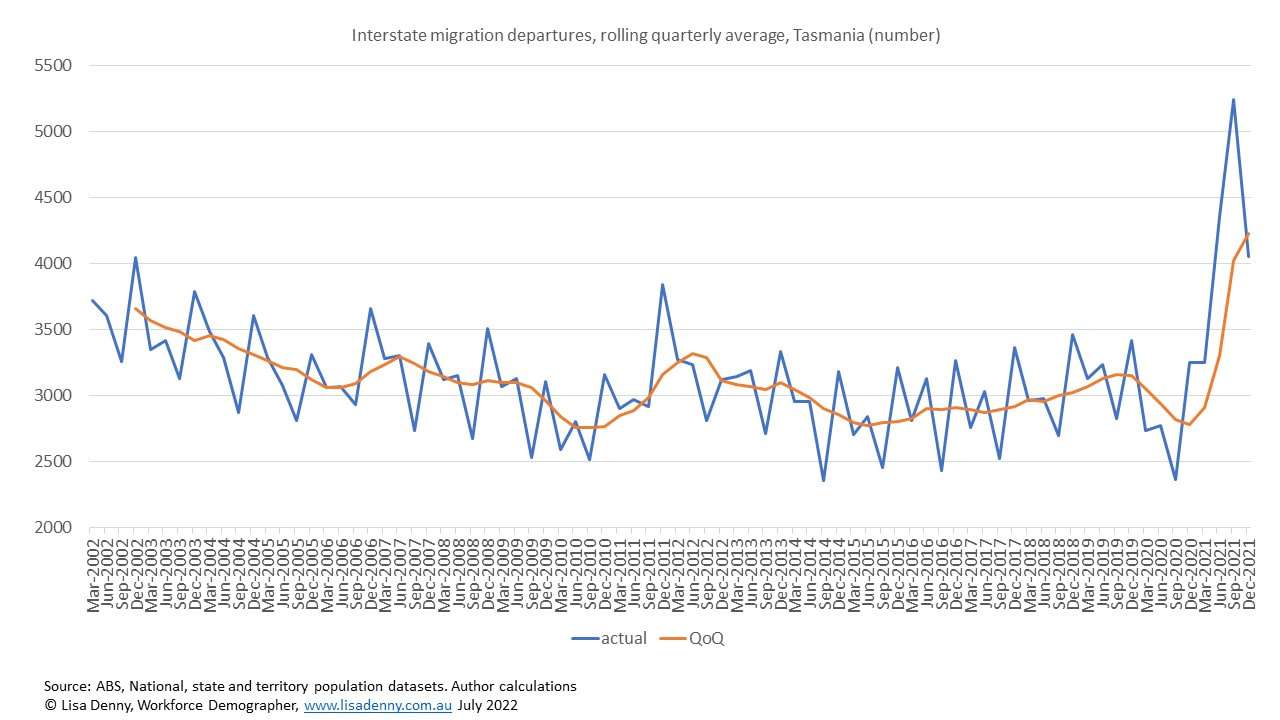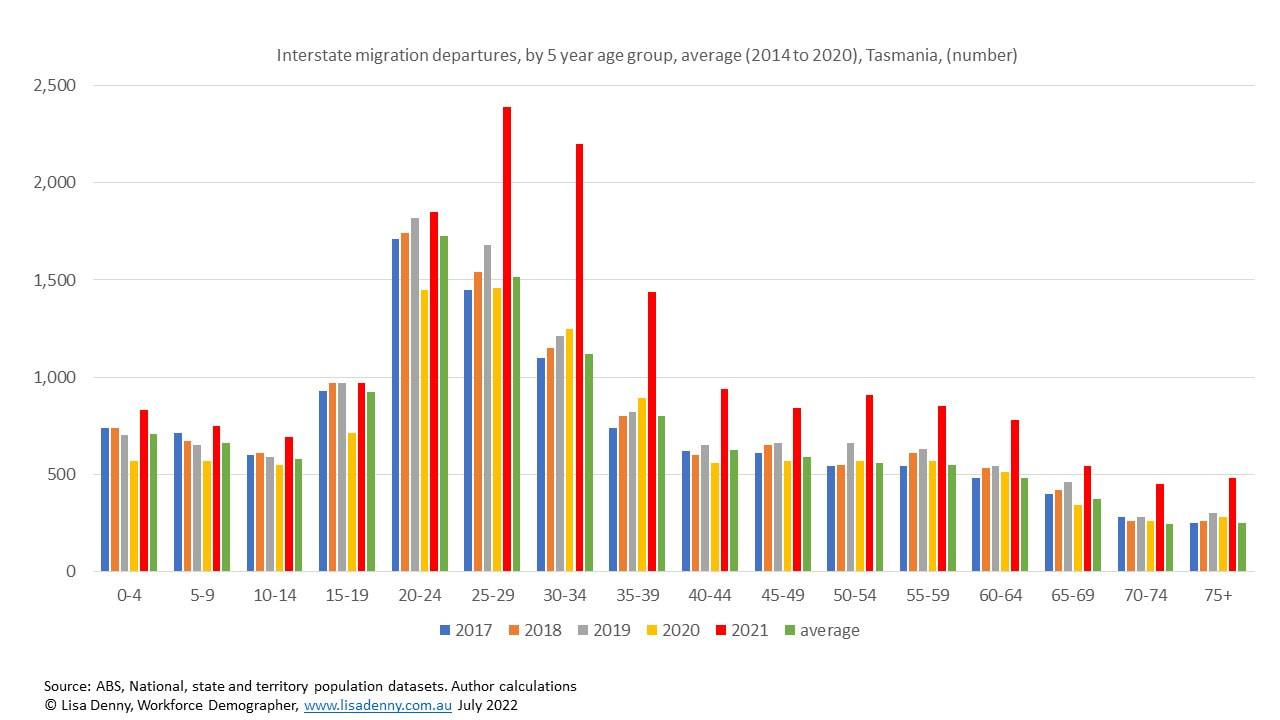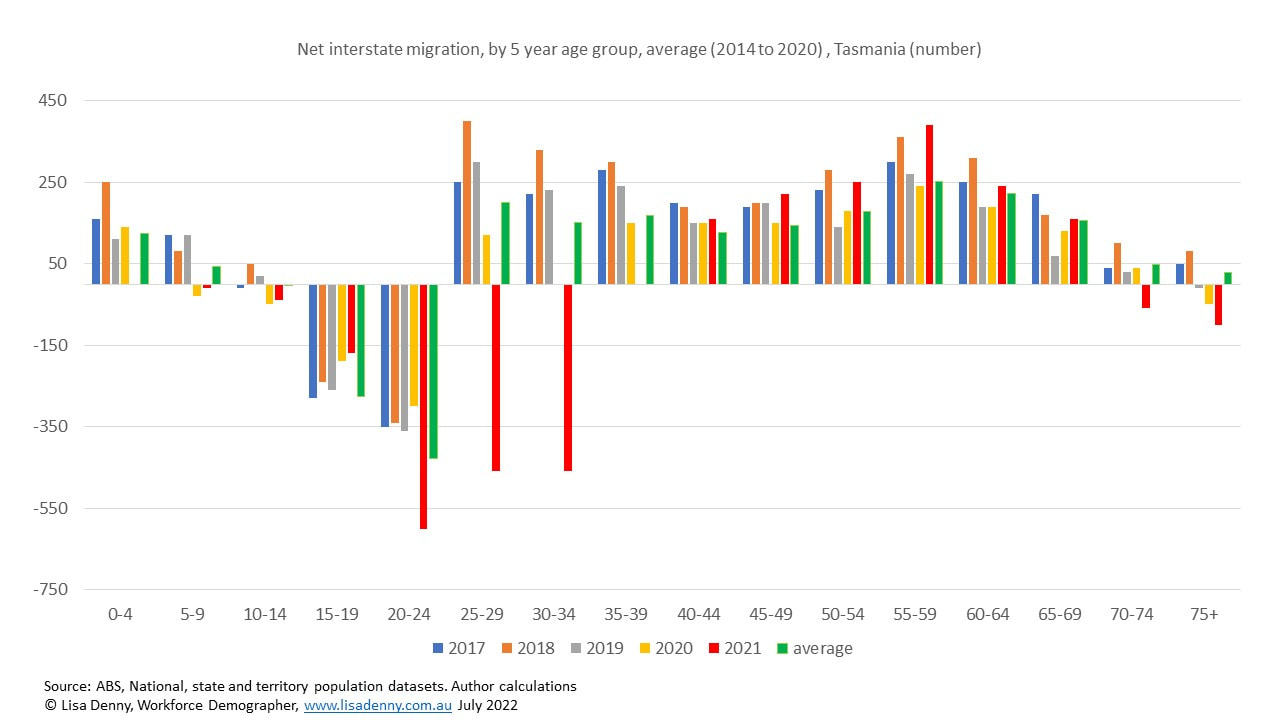More recently, with the release of the first tranche of the ABS 2021 Census of Population and Housing data and the National, state and territory population data on the same day (28 June 2022), this discussion has focussed on the large volume of interstate migration movements within Australia, without consideration of the context in which these movements occurred nor the policy positions that existed at the time.
As we all know, since March 2020, Australia, and its states and territories, have experienced COVID outbreaks, lock downs and border controls at various times and for various lengths of time. These events have prevented ease of mobility within and between states to varying degrees. In addition to these restrictions, the national and state policy positions at the time included vaccinations against COVID-19, firstly with older ages and vulnerable cohorts followed by other age group categories and also then in response to mass outbreaks, particularly in NSW and Victoria. Each state and territory had different rates of take up, reflecting their socio-demographic profiles. In Tasmania's case, as an older, more vulnerable and smaller state with an engaged and proactive Premier at the time, the take up was relatively strong. Nation leading even. Policy positions further evolved to require proof of vaccination to enter public buildings, spaces and other enterprises. As a public health initiative, vaccinations were recorded through the Medicare system and providing proof of vaccination required a digital certificate to be downloaded from the Medicare portal.
Now, you may be wondering how all this impacts interstate migration movements. Interstate migration movements can not be measured directly, so the ABS uses administrative data to estimate interstate migration movements. The primary source of administrative data the ABS uses is Medicare change of address data (as well as ABS Census usual address one year ago data).
The mass COVID-19 vaccination roll out resulted in a significant increase in the number of Australians changing their address with Medicare at different times, in different states and territories, throughout the period of policy changes. The ABS therefore advises that the large number of address changes that were recorded in each quarter, may not have actually occurred in the respective quarter.
This is evident for Tasmania in the below figure. A steep increase in both interstate arrivals and departures is evident between 2020 and 2021. While arrivals to the state had started declining since 2018, and departures from Tasmania had been increasing steadily since 2015, the rate of change in both arrivals and departures is consistent with the period of mass vaccination roll out. However, given that the decision to move interstate is a personal one, it is likely that other factors also contribute to the decision; family, jobs, housing and lifestyle to name a few.
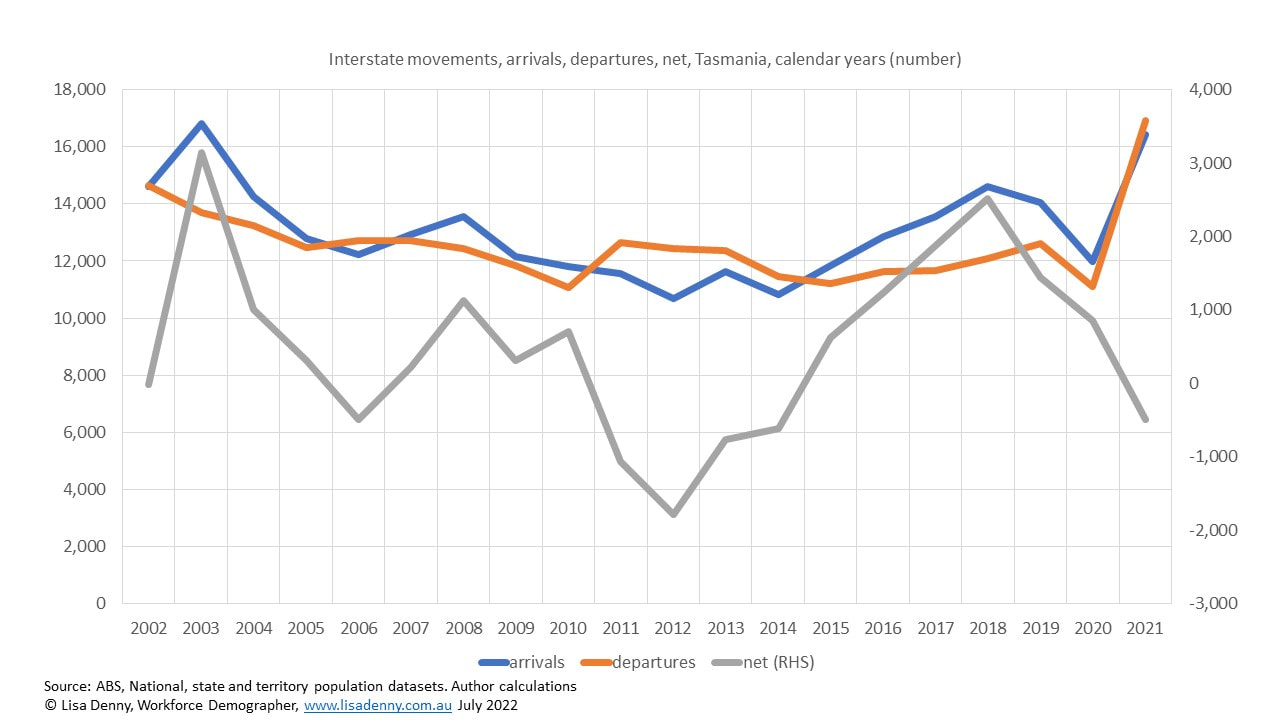
In the figures below, the number of people arriving in Tasmania from interstate began to almost exponentially increase from the September 2020 quarter and continued to the latest available data in December 2021 quarter, levels never before seen.
Tasmania recorded a significant net loss of 20 to 34 year olds during 2021. For all other years since 2017 and the average since 2014, Tasmania had recorded a net gain for the 25 to 34 year ago groups which was reversed in 2021.While Tasmania has historically always recorded a net loss of 20 to 24 year olds, it was considerably more in 2021 compared with previous years.
The net gain for age groups 40 to 69 was higher than average, particularly so for those aged 55 to 59 and 50 to 54 years of age.
The longer term impact on Tasmania's population will be a larger bite in our age structure with a reduction in both the size and proportion of prime working age and reproductive age people, resulting in more rapid population ageing.
The data available lags real time by at least six months and, given we are still living in the pandemic with the impact of COVID-19 still affecting our everyday lives, the economy and society, it is unlikely that any new trends, opposed to short term patterns, will be evident for a number of years. While short term patterns are certainly evident, interstate migration movements will continue to fluctuate relative to other states and territories, as they did prior to the pandemic, and as we find our new normal into the future.
